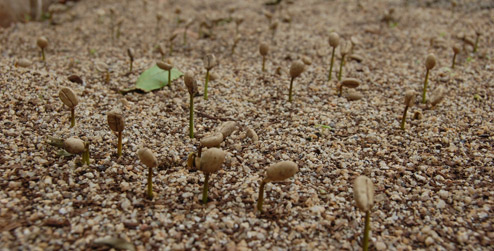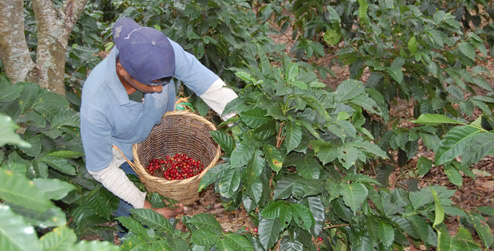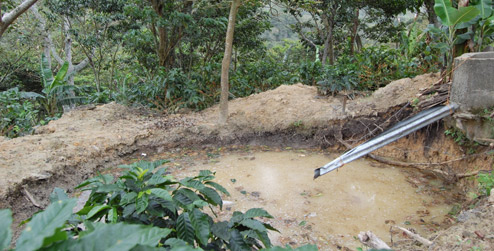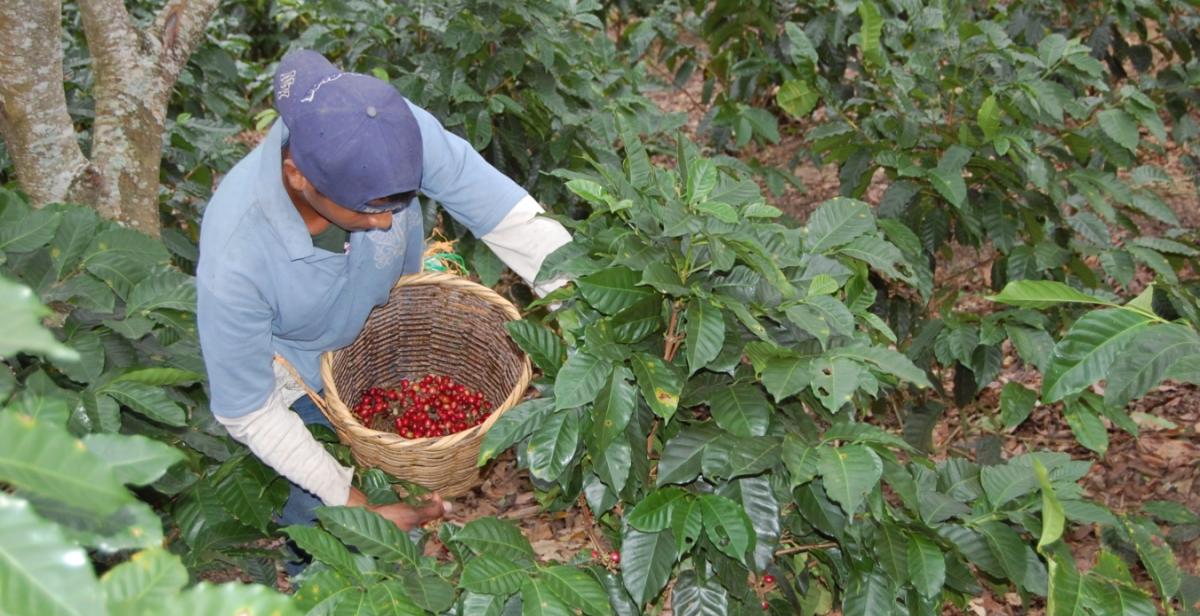There are many reasons to be positive about Nicaragua’s future, one of which is coffee.
On first thoughts one could think this country is one large coffee plantation, serving Starbucks and Costa. However it is very diverse in its organisation. There are of course many estates supporting these but there are also many individuals who grow for themselves and their families. Coffee is a fundamental part of the culture, taking a central role at meal times. Amongst the banana trees, coffee plants grow in Nicaragua’s courtyards becoming one of the essential commodities of their livelihoods.
Despite its final destination, central London or street shack, for people living in this infamous coffee production region, Nueva Segovia, the quality is paramount. To achieve this there is something that never changes, that is, the care they put into the process of making coffee.
We had the opportunity to visit Gonzalo’s estate. The mountainous landscape and its associated microclimate result in an environment ideal for cultivating this aromatic crop. At 1200m altitude, Gonzalo’s baby coffee plants peacefully grew in an organic nursery, which can be seen in the photo below.

The adult plants, spread along the Finca, sag under the weight of the vivid red grains. “Only the best grains can be picked, they need to be the size of marbles with an intense red colour, then you know they are ripe enough”, explained a young collector (seen in the picture below) whilst stripping the bush bare of its precious fruits.

The next step is washing the grains and extracting their pulp. Yes pulp! As we have just learnt coffee beans are coated in a slimy, sweet, honey flavoured liquid. One of the main challenges for coffee producers comes at this part of the process. The resulting liquid, heavy with pulp, degrades the environment, contaminates rivers and can poison drinking water if disposed of irresponsibly.
To deal with the negative impacts of the “Aguas Mieles” (that is what they call the pulp), Eduardo accumulates it in a pool (as can be seen in the picture below). Then he adds bacteria that reacts with the residual liquid and transforms it into an environmentally friendly product. According to Eduardo, “Aguas Mieles” is a very serious problem. Luckily, every day more small producers are educated about the vices of this country's premium crop.

Before lips touch mugs, the clean grain has to dry under the tropical sun for at least a week, which can be seen in the picture below.

The final and crucial step is roasting. Great detail is put into it too. Apparently, the secret of a perfect grain is the time you spend roasting it. “You have to roast coffee very slowly and in small amounts. The slower you roast it the greater the aroma. The longer you roast it the stronger the final flavour”, concludes Gonzalo.
As we have learnt, Nicaragua’s development rests heavy in the hands of people like Gonzalo, who must exploit the full potential of this black gold, without exploiting the people and the land of his own nation.
Progressio ICS volunteers Carlos Valasquez and Harry Job blogs from Nicaragua
Photos by Progressio ICS Volunteer Carlos Valasquez



